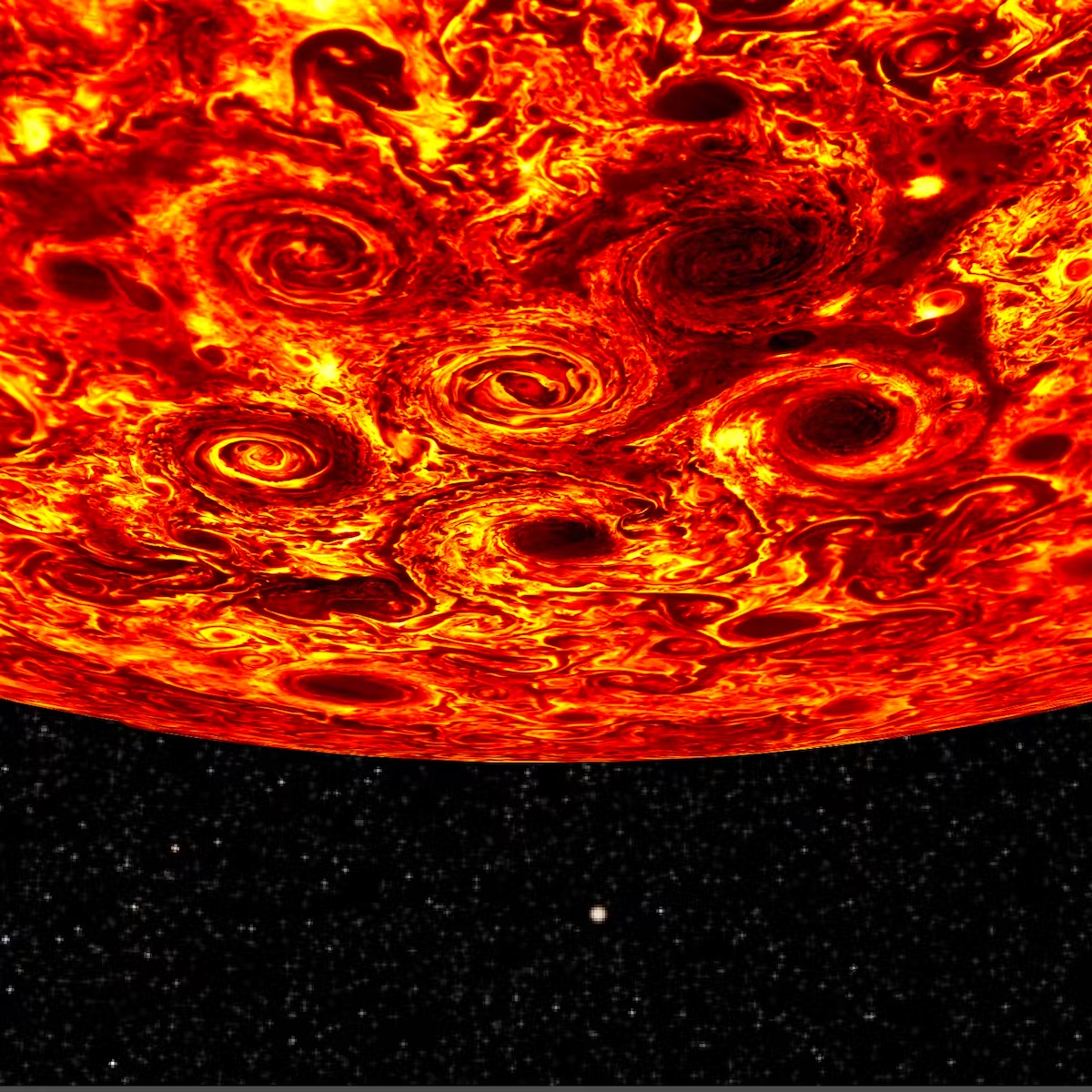
Scientists spot polygon-shaped cyclones on Jupiter, Find the stable pattern surprising
text_fieldsSpace scientists have spotted a set of storms in polygonal patterns on the north pole of Jupiter. The strange cyclones are circling the pole and the stability of the pattern has surprised experts.
The gas giant is one of the most studied planets. According to a report in Vice News, each of these storms is as big as the United States. One theory suggests that an anticyclonic ring" between the main cyclone and the smaller cyclones is keeping the clusters in their unique polygonal patterns.
The north pole has one massive cyclone that has been surrounded by eight smaller cyclones since 2017. Since the June spacecraft discovered them, their vortices have been stable. The polygonal patterns are either rotating slowly or not at all, said the study published in the journal Nature Astronomy.
The analysis of images captured by Juno's Jovian InfraRed Auroral Mapper (JIRAM) instrument did not find expected lines regarding the signature of convection-a spatial correlation between divergence and anticyclonic vorticity.
At the south pole of Jupiter, a similar structure of cyclones exists in a hexagonal shape.
These cyclones are new weather phenomena that have not been seen or predicted before, said a June scientist Cheng Li from the University of California. "Nature is revealing new physics regarding fluid motions and how giant planet atmospheres work. We are beginning to grasp it through observations and computer simulations. Future Juno flybys will help us further refine our understanding by revealing how the cyclones evolve," said the expert.

















